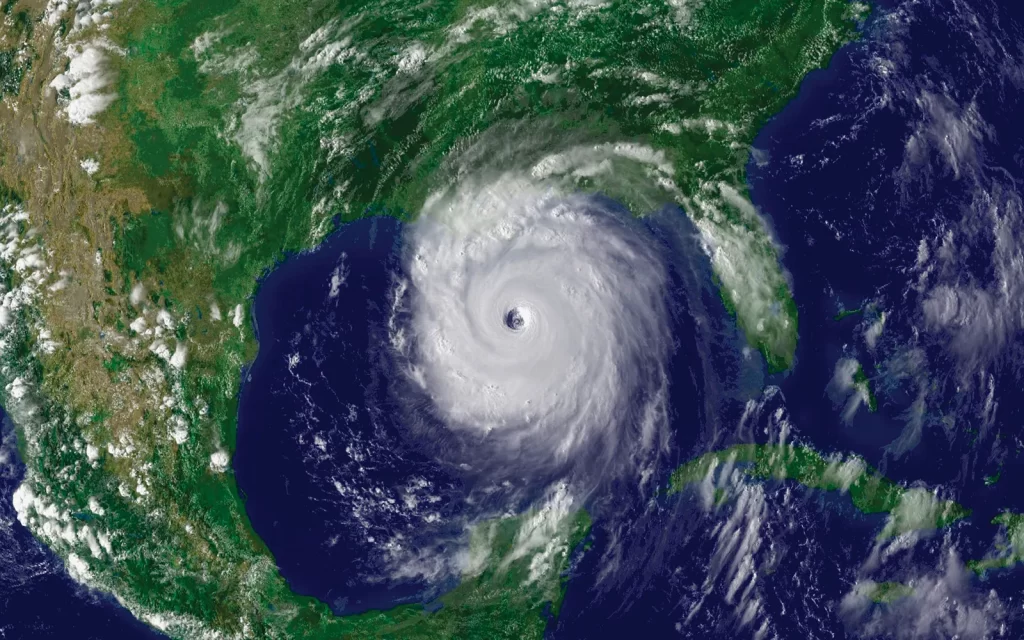Studies have shown that in three years, an average of 5 hurricanes hit the United States coastlines, killing hundreds of people and damaging many more homes. However, an overlooked aspect of the impact of hurricanes is the diseases and illnesses that are spread after a hurricane hits. With several more expected hurricanes to arise, due to climate change, public health faces a new challenge: microbes.
Microbes are a microorganism that is essential for human life, yet can also pose a threat to health. Common Microbes include bacteria, fungi, and viruses. As hurricanes form, they move microorganisms from continent to continent which aerosolizes the microbes in the environment and transports them to different regions of the world. Microbes have a lasting impact on the way that society recovers after a hurricane. The resurgence of microbes can cause human illnesses while also exacerbating the water quality and creating food loss.
As different microbes are transported, in the aftermath of a hurricane, different pathogens are released. Water-borne pathogens come in contact with the bloodstream through cuts and scraps, which can cause illnesses such as streptococcus pyogenes or vibrio vulnificus. Other water-borne diseases, such as leptospirosis, were found in those exposed to the contaminated water during the clean-up of Hurricane Fiona in Puerto Rico. Flood waters are places where mosquitos breed, which causes an increase in viral diseases such as West Nile and Zika disease. Research shows that the West Nile virus increased in Mississippi and Louisiana after Hurricane Katrina. The flooding of buildings creates the expansion of mold that deteriorates air quality and has long-lasting effects on health after a hurricane. The fungi can aggravate the immune response of those who inhale the spores, causing the growth of airborne fungi such as the genera Penicillium and Aspergillus. These fungi create different health risks from allergies to pneumonia. Based on the evidence, it shows that the microbes produced after a hurricane have a direct effect on public health.
Not only do microbes create illnesses after a hurricane, but they also can lead to food insecurity and contaminated water. After a hurricane, stormwater runoff contaminates both groundwater and surface water. The flood water then overflows into sewers, wells, and other infrastructure that holds drinking water. This action potentially contaminates drinking water and also water used for agriculture. The contamination of floor water can impact the soil used for farming, leaving bacteria in the soil. Additionally, the humidity, saturated soil, and damage to crops increase the exposure of microbial pathogens to crops. Phytophthora blight, caused by an oomycete that is spread through water, was a disease spread after Hurricane Irene that affected the production of pumpkins and tomatoes in New York. The high wind created from hurricanes also spread the spores of pathogenic fungi and bacteria which puts the crops at great risk of exposure to diseases such as soybean rust. Soybean rust was found for the first time after Hurricane Ivan in the crops of Louisiana. To conclude, the emergence of microbes after a hurricane can lead to contamination of water used for drinking and also lead to food loss.
To review, the emergence of microbes after a hurricane has a lasting impact on the way of life across the globe. From diseases to contaminated water, hurricanes are proven to impact the world in several unique ways. As hurricane season approaches, it is important to prepare for the impact and prevent future hurricanes. However, different organizations work to support countries that have faced a natural disaster, like a hurricane, including the American Red Cross and Habitat for Humanity, that create hope for humanity.
Works Cited
“The Microbial Aftermath of Hurricanes.” ASM.Org, asm.org/Articles/2022/November/The-Microbial-Aftermath-of-Hurricanes#:~:text=Hurricanes%20can%20lead%20to%20the,harboring%20fecal%20coliforms%20and%20enteropathogens. Accessed 08 Oct. 2023.
How Do Hurricanes Affect Your Drinking Water?, www.hydroviv.com/blogs/water-smarts/how-do-hurricanes-affect-your-drinking-water#:~:text=Hurricane%20Flooding%20and%20Water%20Systems&text=Hurricane%20rain%20and%20flooding%20can%20cause%20these%20systems%20to%20overflow,microorganisms%20due%20to%20hurricane%20flooding. Accessed 08 Oct. 2023.
Hurricane Facts, www.weather.gov/source/zhu/ZHU_Training_Page/tropical_stuff/hurricane_anatomy/hurricane_anatomy.html. Accessed 08 Oct. 2023.
